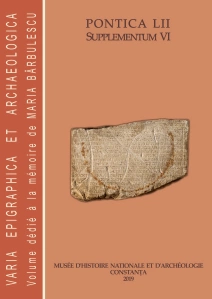Reprezentări figurate ale Medusei la Callatis
Figurative representations of Medusa in Callatis
Author(s): Laurențiu RaduSubject(s): History, Anthropology, Social Sciences, Archaeology, Cultural history, Local History / Microhistory, Ancient World
Published by: Muzeul de Istorie Națională și Arheologie Constanța
Keywords: Medusa; Callatis; ceramic medallions; ceramic discs;
Summary/Abstract: Medusa, with an oriental origin, has become a widespread decorative element in the ancient world. In the archaic period Medusa is represented as a grotesque figure with feminine characteristics. Later, in the classical era, this image becomes that of a beautiful young woman. The figurative representations of the Medusa known until now in Callatis are, in their majority, ceramic discs or medallions (52 pieces), bronze sconces (4 pieces), ceramic protomes (5 pieces) used for apotropaic purpose, to which we can add two ceramic antefixes and a marble pediment fragment, totalising 65 pieces. From the chronological point of view, the oldest representations of the Medusa were classified in the 4th-3rd c. BC, and the most recent discovery in the second third of the 4th c. AD. Most of the pieces date from the Hellenistic era (4th - 2nd c. BC) - 59 samples, and from the Roman era - 6. In the Hellenistic era most images are on ceramic discs or medallions, a fact that changes in the Roman era when ceramic protomes and sconces predominate, used as decoration for various objects, which reflects the change of their perception: from an object with well - defined apotropaic function to a simple element of decoration with aesthetic character.
Journal: Pontica
- Issue Year: VI/2019
- Issue No: 52
- Page Range: 323-335
- Page Count: 13
- Language: Romanian

